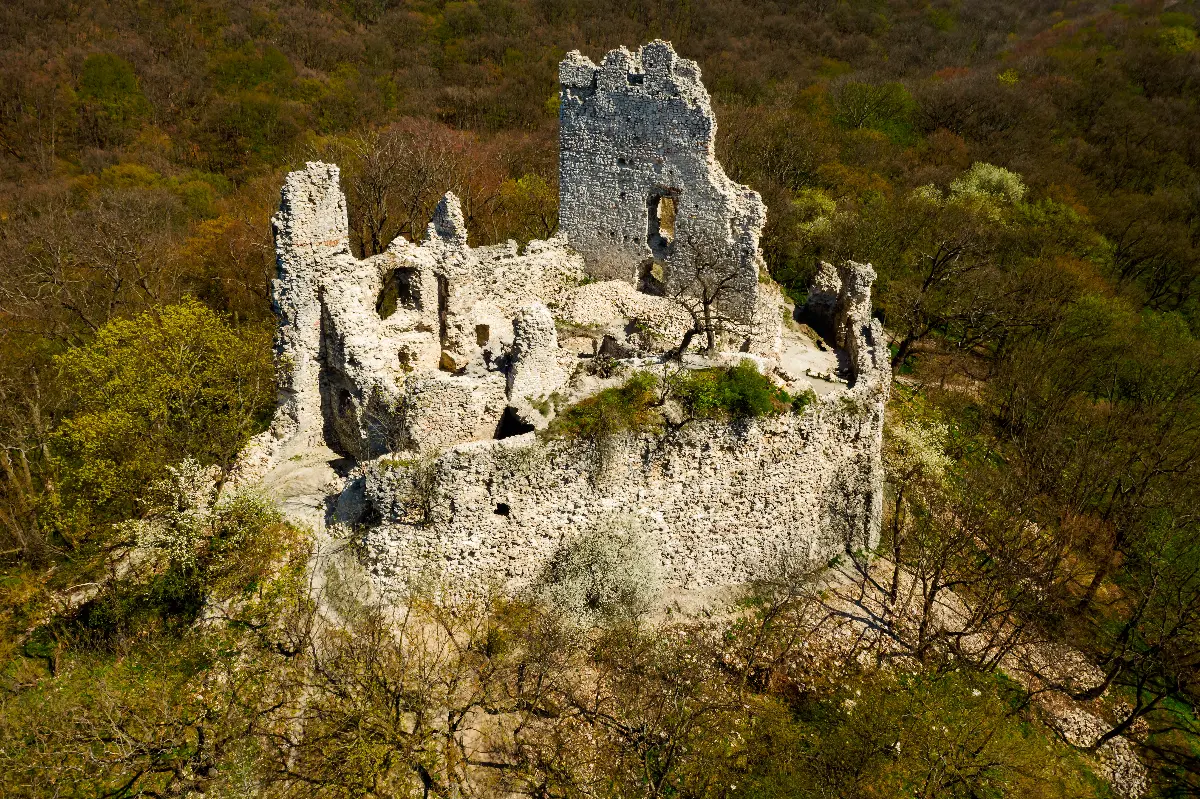
Helyszín címkék:
Ancient people and a Michelin star on the slopes of the Vértes Mountains
Hype&Hyper
In terms of its size, it is not at the top of the list among the domestic mountains (30 km long, 10-15 km wide, and its highest peak, the Nagy-Csákány, is only 487 m high), but its barren, steep dolomite walls stand out sharply from the landscape of the Little Plain region. It takes its name from a battle in 1051, when the army of the German-Roman Emperor Henry III attacked the Hungarians, but the Hungarians were so devious in their attempts to get the better of the enemy that the nervous army ran home, leaving behind their weapons and breastplates.
Paleontology
There are, of course, much earlier historical records of the life of the almost 30 km long mountain. In the rocks of Csákányospuszta we can see the imprint of the prehistoric sea, which subsided in the Cretaceous, when the mountain range began to rise. At that time, the climate of the area was tropical, which led to the formation of bauxite, one of the important minable minerals of the present-day Vértes. Csákvári Cave is one of the richest archaeological sites in Hungary, as far as ancient animals are concerned: remains of 180 species have been found here, including saber-toothed tigers, ancient giraffes, three-fingered ancient horses, mastodons (an ancient elephant species) and the Csákvár hyena. They all lived 10-12 million years ago, when the land was savannah-like. In addition, caveman remains and Roman temple remains have been found here, too. However, the famous caveman of the area was not found here, but in Vértesszőlős. Samu is one of the oldest prehistoric humans in Europe, living around 350,000 years ago and belonging to the Homo heidelbergensis species. Today there is a museum on the site of the excavation, called Vértesszőlős Őstelep (Vértesszőlős Archaeological Site), which belongs to the Hungarian National Museum.

The best in the area
The area offers a variety of gastronomic adventures. The Mór wine region, famous for its white wines, is located on the southern slopes of the Vértes, where you can taste great wines even if you don’t plan your visit around the Mór Wine Days in October (but it is worth exploring this event, too). If you prefer fine dining to festivals, head to Tata. The shores of Lake Tata’s Old Lake were a popular destination centuries ago, with its shady trees, clean air and seclusion from the world. The count’s estate of the Esterházy family was spread out here from the 18th century onwards, with several small buildings next to the two-towered castle, which provided accommodation for the staff. After the Second World War, it was taken over by the state and used as a hospital, then stood empty, leaving the historic buildings considerably tarnished. After a renovation in 2007, the restaurant opened in 2009 and has been operating since 2018, now running as the Platan complex, as a representative of a truly refined gastronomic culture. Just as Platán Bistro earned a Michelin recommendation, Platán Gourmet Restaurant was the first Hungarian restaurant in the countryside to earn a Michelin star, under the management of Chef István Pesti, and sensationally, two. Besides the fantastic food at Platán Gourmet, the beautiful town of Tata itself is well worth a visit.

For backpackers
The Vértes is also an excellent place to explore in boots, with well-maintained hiking trails and relatively low altitude differences. You can download a tourist map from the Vértes Nature Park website to help you find routes to suit your fitness level. In addition, there are several old castles and castle ruins that make a good destination for a tour: the Gesztes castle is the most restored today, but the ruins of the Vitányvár, Csákvár and Csókakő castles are also worth a visit. All of them can trace their origins back to the Árpád era.








